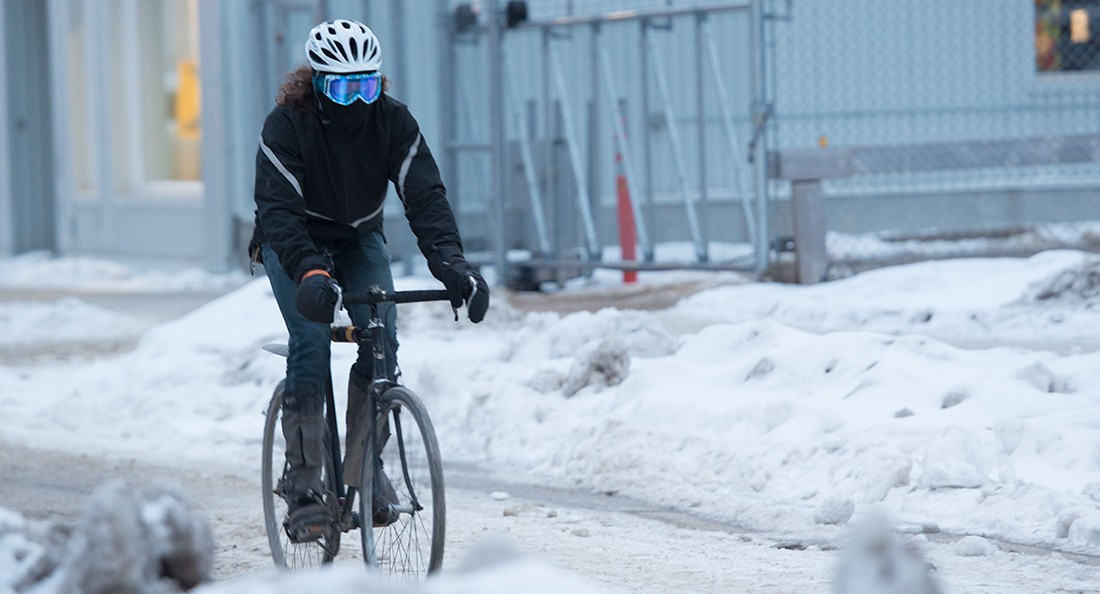Layer up for your commute
Tips and tricks on how to dress for winter cycling
Layers are key when it comes to dressing for winter cycling.
“Many thin layers are better than one big, thick layer, because temperature regulation can be challenging, especially if you’re out for the whole day,” Sarah Thiessen, volunteer co-ordinator at The W.R.E.N.C.H., says.
Matt Gain, the UWSA Bike Lab general co-ordinator, recommends wearing a light base and a heavy fleece beneath a waterproof outer layer.
“If you start off warm, you’re going to be sweating by the time you get to wherever you’re going … If you’re willing to be a bit chilly at the start, your body will heat itself up pretty quickly,” he says.
He explains that the windproof layer is integral for keeping warm.
“If you have nice warm clothes underneath but (nothing to keep) the wind and cold out, it’s not gonna do a whole lot,” he says.
Thiessen emphasizes that dressing for winter cycling doesn’t have to break the bank.
“I like to just layer thrift store wool sweaters,” she says. “It doesn’t have to be anything expensive and fancy.”
Thiessen stresses the importance of keeping extremities warm. She recommends wearing heavy mittens with thin gloves underneath, to maintain dexterity when the time comes to lock the bike. Warm boots are important as well.
To keep his head warm, Gain wears a balaclava under his helmet.
“I like to have one that has a little bit of mesh in front of the mouth. It makes breathing a lot easier,” he says. A thin, tight neck warmer is an alternative to the balaclava, and it stays in place better than a bulky scarf.
Gain explains that insulated snowboarding helmets add warmth, but a regular bike helmet will work just fine.
Some cyclists wear goggles, but Thiessen warns that this reduces vision.
“It can be harder to hear and see traffic when you have goggles and a helmet on,” she says.
Thiessen carries over her summer style by wearing scarves with bright colors and patterns.
“My neck warmer is leopard print, which I quite like,” Thiessen says. “My bike is decorated as well, which I feel adds a quirky style.”
Thiessen also wears a peacoat that has room to layer up beneath, which she finds is more stylish and less sporty than a typical cycling jacket.
“I used to feel very androgynous riding my bike before I got this more feminine coat,” Thiessen says.
In a balaclava and sporty bulky clothing, she felt like she could be anyone.
“Your body shape and your gender are totally not visible,” she says.
Gain is less concerned with fashion.
“There’s certainly always going to be a certain level of sacrifice,” he says. “Sometimes it’s a bit of a case of function over style.” He suggests bringing a change of clothing for after the commute, if needed.
Gain emphasizes that winter cycling shouldn’t feel intimidating, and that most people already have what they need.
“If you’re not comfortable with the conditions, you don’t have to ride,” he says. “We’re doing it because it’s a convenient way of getting around.”
International Winter Bike to Work Day is Feb. 9.
Published in Volume 72, Number 15 of The Uniter (January 25, 2018)





